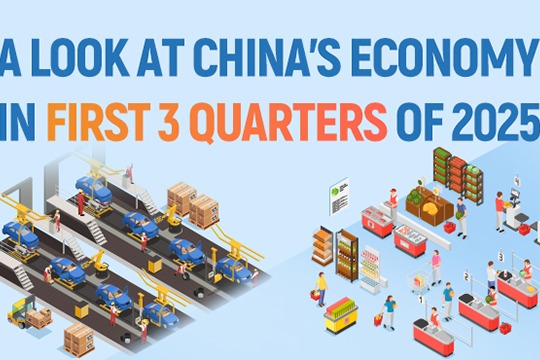Fintech creates better environment for SMEs


China's commitment to upgrade the financial sector with advanced technologies brings tangible benefits to enterprises
China's efforts to make financial services more accessible and affordable for small businesses via technological innovations have made headway since the nation released its fintech development blueprint a year ago, officials and experts said.
They also called for improving the regulatory framework and sharpening technological innovation to strengthen the ability of fintech to serve the real economy, as the nation's focus remains on safeguarding market entities since the COVID-19 outbreak.
Chen Yulu, vice-governor of the People's Bank of China, the central bank, said the country's commitment to upgrading the financial sector with advanced technologies has "borne initial fruit" since the release of the fintech development plan.
In August last year, the PBOC issued a three-year development plan for fintech (2019-2021), serving as the nation's first blueprint for its booming fintech sector and aiming to maximize the role of technologies in driving high-quality development of the financial sector.
The plan proposed that, by 2021, the country will substantially improve user satisfaction of fintech services, join the ranks of global fintech leaders, strengthen risk management and regulatory efficiency and achieve other development goals.
The PBOC is actively establishing the regulatory framework for technological applications and improving the fundamental rules of regulation to provide a better environment for fintech development, Chen said at the recent China International Finance Annual Forum in Beijing.
As the plan reached its anniversary, third-party organizations from home and abroad have recognized China's progress in the penetration of fintech products as well as the sector's global competitiveness.
The fintech sector in China has undergone a major change, from mainly engaging in peer-to-peer lending to leveraging fintech to reduce financing costs, especially for small businesses, said Wendy Liu, head of China Strategy at UBS Investment Bank.
"Practices in China have shown that companies with strong technological capacity can leverage big data and real-time tracking to boost the scale of consumer loans and small business loans while reducing costs," Liu said.
As of the end of June, China's banking industry's total balance of "inclusive loans", or loans granted to small businesses with a credit line of up to 10 million yuan ($1.46 million), amounted to 13.7 trillion yuan, up nearly 30 percent from a year earlier, according to the China Banking and Insurance Regulatory Commission.
The inclusive loans granted in the first half of the year had an average interest rate of 5.94 percent, down 0.76 percentage point from the average of the whole year of 2019, with fintech as one of the key drivers of the improved efficiency of serving small businesses, the commission said.
Tony Chan, deputy president of the South China Committee with CPA Australia, one of the world's largest accounting bodies, said the development plan has promoted fintech usage among Chinese businesses, and they are leading the way in use of the technologies among Asian respondents, according to a recent CPA Australia survey.
Four-fifths of Chinese mainland-based respondents reported that their businesses had used at least one fintech product or service in the past year, the highest proportion among the surveyed markets, he said.
The proportion of mainland-based respondents that maintained or increased their usage of mobile payments or digital wallets, wealth management technology and fintech lending was also the highest over the past year, Chan said.
Li Yang, chairman of the National Institution for Finance & Development, said robust market demand backed by a large domestic population has driven China's fintech development.
Yet, China's development in fintech could lag behind global peers when it comes to technological advances and regulatory framework, Li said at the China International Finance Annual Forum.
Besides calling for optimizing regulation over new fintech application scenarios, Chan urged more Chinese businesses to appreciate the importance of fintech, which has become a key driver of business growth.
"Despite rising external uncertainty, Chinese businesses are expected to maintain their edge in fintech applications given flourishing new technologies, changing consumer behavior and a series of government incentives," Chan said.




































